Sweeney's Men (1966-1968)
Photo Gallery -
Band Lineups -
Discography
- Audio samples -
Where Are They Now?
The Story
Our thanks to John Warburg and Andy Irvine's own website
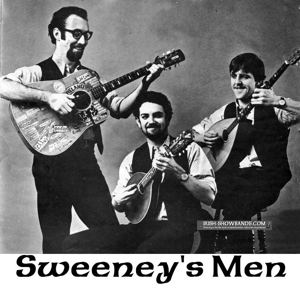 Sweeney's
men emerged from the late 1960s Irish ballad scene which had
its roots with bands like The Dubliners and The Clancy
Brothers. The band experienced brief popularity, with their
first and second singles hitting the top ten in the Irish
charts, but they fell apart shortly thereafter. Sweeney's
men emerged from the late 1960s Irish ballad scene which had
its roots with bands like The Dubliners and The Clancy
Brothers. The band experienced brief popularity, with their
first and second singles hitting the top ten in the Irish
charts, but they fell apart shortly thereafter.
In January, 1965, Andy Irvine and
Joe Dolan (not THE Joe Dolan) had started playing together,
traveling across Europe in search of gigs, According to Andy on
his own website, "Two friends
of mine had hit the road for Denmark and returned with stories
that made my feet itch. I suddenly realised, along with half the
rest of Europe’s youth that there was a big wide world out there
waiting to be explored. So late in 1965, myself and a Galway man
called Joe Dolan set out to travel through Europe, playing on
the streets of Munich and Vienna."
In early, 1966, Joe returned to Ireland, while
Andy gigged in Denmark and told him they had secured a summer
residency in the Enda Hotel in Galway. He returned to Ireland
and in
May, 1966,
Joe and Andy had moved on to Galway (Joe's home town) and formed
Sweeney's Men along with Johnny Moynihan from Dublin, who
also came for the summer gig. When the gig in Galway ended due
to a dispute, they hit the road in their red Volkswagen van.
Relocating to Dublin, the band signed with manager Des Kelly of
the Capitol Showband and appeared on
several singles released by the Capitol in the same year. It was
almost a year before the trio ventured into the studios and
produced their first single
on Pye Records. Andy takes up the
story, "Des decided it was time for us to
record. We went down to Eamonn Andrews studio in Henry street
and Des played bass guitar. We recorded three tracks; Old
Maid in the Garrett which became the A side, The Derby
Ram which went on the B side, and Sullivan’s John
with Joe singing. This was the one we liked the best. I don’t
know what became of it, it was never heard of again."
(Editor's note: Funnily enough, Sullivan's John became the
band's third single, although we are not sure who did the
vocals.)
The traditional song, Old Maid
In A Garret did extremely well, climbing into the Irish Top
Ten and eventually reaching number 6, staying in the charts for
13 weeks and making the boys a hit on the exploding ballad
scene.
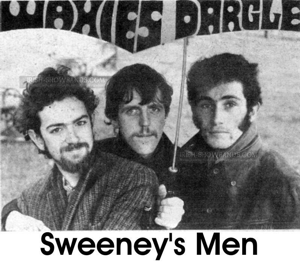 A
few months later, in June 1967, Joe decided to travel to
Israel to fight in the Six Day War (5 - 10 June 1967) and
guitarist, vocalist Paul Brady
stood in for a few gigs, but turned down an offer to join
permanently. Paul instead went to join the
Johnstons, with which he had great
success before finally going solo a few years later. His
permanent replacement was singer and multi instrumentalist Terry
Woods. With the addition of Terry, the band members switched
between playing tin whistle, concertina, harmonica, guitar,
mandolin, banjo and bouzouki, as well as all singing. A
few months later, in June 1967, Joe decided to travel to
Israel to fight in the Six Day War (5 - 10 June 1967) and
guitarist, vocalist Paul Brady
stood in for a few gigs, but turned down an offer to join
permanently. Paul instead went to join the
Johnstons, with which he had great
success before finally going solo a few years later. His
permanent replacement was singer and multi instrumentalist Terry
Woods. With the addition of Terry, the band members switched
between playing tin whistle, concertina, harmonica, guitar,
mandolin, banjo and bouzouki, as well as all singing.
Says Andy of the period, "By this time the
so called ‘Ballad Boom’ was in full swing. Bands in three piece
suits with double basses, banjos and guitars lashed out The
Wild Rover, We’re all off to Dublin in the Green and
The Banks of the Ohio, taking up a position somewhere
between The Clancy Brothers and The Kingston Trio. Sweeney’s Men
were somewhat different; we pandered to our own tastes rather
than the fashions of the day and though we were up there with
the best of them, I think we bemused audiences more than a
little. They would yell, "Sing something we all know!" We
didn’t."
Around this time, the band was playing the
ballad lounges and had a regular gig in the Liberty Hall on
Friday nights. They also began to play the in dance halls along
with the showbands of the era. Andy explains, "we would only
have to play for about half an hour, as a guest spot, and the
dancers were supposed to take a break and listen."
In early 1968, the band
released their second single, another traditional number
arranged by the band, Waxie's Dargle. Like its
predecessor, the record climbed the Irish Charts, this time
reaching number 5 and staying on the charts for 10 weeks.
The folk circuit was growing in Ireland and bands like
Sweeney's Men, the Johnston and others, began to find
success further from home, releasing records in the UK and
across Europe.
Shortly after
the release of Waxie's Dargle, the band moved to
Transatlantic Records for the remainder of their releases.
In May, the
band went to England to record their first full-length
album, Sweeney's Men at The Livingstone Studios in
Barnet, Middlesex, in just 36 hours.
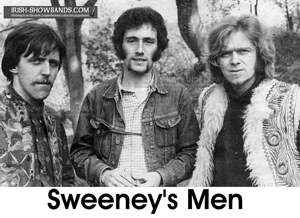 In
May 1968, the band underwent a major change when founding
member, Andy, left the band to travel
in Eastern Europe. He was replaced by Portstewart guitarist,
Henry McCullough, who had previously played with Gene and
the Gents and Enniskillen's Skyrockets showbands.
He had also been on tour in the USA with Irish rockers,
Eire Apparent, but his trip was cut short when he was
accused of being in the possession of drugs. Henry played
electric guitar, and his tenure saw the band explore more
progressive, psychedelic territory. The new lineup debuted on
17 May 1968, and in July, they played The 4th Cambridge Folk
Festival, Cambridge, England. In
May 1968, the band underwent a major change when founding
member, Andy, left the band to travel
in Eastern Europe. He was replaced by Portstewart guitarist,
Henry McCullough, who had previously played with Gene and
the Gents and Enniskillen's Skyrockets showbands.
He had also been on tour in the USA with Irish rockers,
Eire Apparent, but his trip was cut short when he was
accused of being in the possession of drugs. Henry played
electric guitar, and his tenure saw the band explore more
progressive, psychedelic territory. The new lineup debuted on
17 May 1968, and in July, they played The 4th Cambridge Folk
Festival, Cambridge, England.
Not one to
hang around, Henry left the band a few months later in July
to join The Grease Band and the group split. In
August the band reformed and McCullough was briefly replaced
by vocalist Al O'Donnell, who also did a stint with the
Dubliners. In September
O'Donnell left the band, which split again. In October, the
band reformed again as a duo of Woods and Moynihan. It was
this duo of Woods and Moynihan who recorded the band's
second and final album The Tracks Of Sweeney. This
album was recorded at the same studios as their first album,
The Livingstone Studios in Barnet, Middlesex.
On 22 November 1968 the band broke up. In December shortly
after the band broke up Sweeney's Men released their
second and final album. A reunion almost occurred
in 1970 or 1971, with Ashley Hutchings joining on
guitar, but this never happened.
Despite a very short time on the scene, Sweeney's Men
achieved almost legendary status as one of the
vanguards of the "new" Irish traditional music which
was further solidified by bands like
Planxty and
DeDannan in the 1970's. Additionally, every member who
ever played with the band went on to achieve great
success as solo artists or as members of other famous
bands of the era.
click on thumbnails for full image
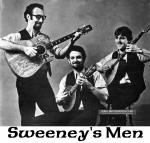 |
 |
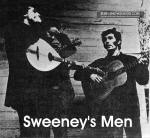 |
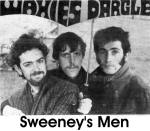 |
 |
| Sweeney's Men - 1967 |
Sweeney's Men - 1967 |
Sweeney's Men - 1967 |
Sweeney's Men - 1968 |
Sweeney's Men - 1968 |
 |
 |
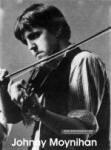 |
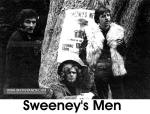 |
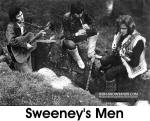 |
| Sweeney's Men - 1968 |
Sweeney's Men - 1968 |
Johnny Moynihan-1968 |
Sweeney's Men - 1968 |
Sweeney's Men - 1968 |
 |
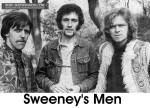 |
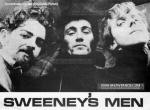 |
|
|
| Sweeney's Men - 1968 |
Sweeney's Men - 1968 |
Sweeney's Men
(RF) |
Coming Soon |
Coming Soon |
| |
|
|
|
|
| Coming Soon |
Coming Soon |
Coming Soon |
Coming Soon |
Coming Soon |
|
Years |
Vocals |
Guitar |
Guitar |
Drums |
|
1966 |
Johnny
Moynihan |
Joe
Dolan |
Andy
Irvine |
|
|
1967 |
Johnny
Moynihan |
Paul (few gigs)
Brady |
Andy
Irvine |
|
|
1967 |
Johnny
Moynihan |
Terry
Woods |
Andy
Irvine |
|
|
1968 |
Johnny
Moynihan |
Terry
Woods |
Henry
McCullough |
|
|
1968 |
Johnny
Moynihan |
Terry
Woods |
Al
O'Donnell |
|
|
1968 |
Johnny
Moynihan |
Terry
Woods |
|
|
Discography
Singles:
Old Maid in the Garrett / The Derby Ram -
#6 Irish Charts
Pye Records - 7N.17312 - May, 1967
Waxie's Dargle / Old Women In Cotton -
#5 Irish Charts
Pye Records - 7N.17459 - February, 1968
Sullivan's John / Rattlin' Roarin' Willy
Transatlantic Records - TRA SP19 - June, 1968
Albums:
Sweeney's Men
Transatlantic Records - TRA 170 - July, 1968
The Tracks of Sweeney
Transatlantic Records - TRA 200 - 1969
Audio Clips
Coming Soon
Where Are They Now?
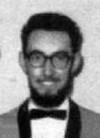 |
Joe Dolan - RIP:
After leaving the music business, Joe became a well know
artists in his native Galkway until his death on January 7,
2008 after a battle with cancer. |
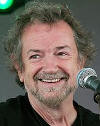 |
Andy Irvine: After
leaving Sweeney's Men, Andy went on to international success
as one of the best known musicians of the "new" Irish trad
music. Whether with bands like Planxty or De Dannan, he
continued to push the boundaries of Irish music. Today, Andy
continues to tour both as a solo artist and with various
combinations such as Patrick Street
and Andy Irvine & Dónal Lunny's Mozaik.
|
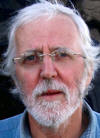 |
Johnny Moynihan: In
the 1970s Johnny briefly joined Planxty for their album
Cold Blow and the Rainy Night. After Planxty, he went
his own way and for a period of time fronted the Fleadh
Cowboys, a popular band in 1980s Dublin. He also flirted
briefly with De Dannan and can be heard on their second
album, Selected Jigs, Reels & Songs (never issued on
CD). He reunited for a one-off concert with Irvine in Galway
in 2001 and can be seen and heard frequently in the
Cobblestone Pub in Dublin. Johnny continues to tour and
remains one of the early major influences on the Irish
traditional scene today. |
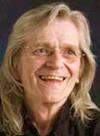 |
Henry McCullough: Of
course, as mentioned above, Henry left the band to join Joe
Cocker's Grease Band and we think he may be the only
ex-showband member to have played at the legendary Woodstock
festival. He then joined up with Paul McCartney in Wings for
a period and is credited with the moving guitar solo on My
Love. In the early 80s, an accident almost cost Henry his
livelihood, severing tendons in his playing hand. The road
to recovery was almost complete when Henry started sitting
in with the Fleadh Cowboys for their now legendary Sunday
afternoon residency in The Lower Deck in Dublin. He then
formed his own band and toured Ireland in 1988. In the 90’s
he moved back to Portstewart and formed a new band which he
still tours with today. |
 |
Paul Brady: After
joining the Johnstons, Paul and
the band moved to London in 1969 and later in ’72 to New
York City. He returned to Dublin in 1974 to join
Planxty. From 1976 to 1978 he
played as a duo with Andy Irvine. The next few years saw him
establish his popularity and reputation as one of Ireland’s
best interpreters of traditional songs, but by the end of
the ’70′s however, he found himself back at the same
crossroads. Since then, he has achieved international
success as a performer, songwriter and has crossed musical
genres from country to pop to rock and back to his roots in
traditional music effortlessly. He remains one of Ireland
best loved performers. |
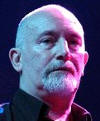 |
Terry Woods: After
leaving the band, Terry toured Ireland with Orphanage
which included Phil Lynott. Then Terry and his wife Gay went
to England where they met up with Ashley Hutchings from
Fairport Convention. Hutchings wanted to form a band
with the three past members of Sweeney's Men and a drummer,
but instead the folk duo Tim Hart and Maddy Prior and
Terry's wife Gay became members of Steeleye Span, but
shortly after Gay and Terry formed The Woods Band. In
1980 Gay and Terry split and he was to become part of The
Pogues for ten years and later a band called The
Bucks. |
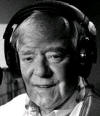 |
Al O'Donnell: After
leaving the band, Al joined the RTE Design Department, and
became a Senior Designer. He continued to perform at various
festivals and tours, along with Irish TV appearances,
including various French, German, Canadian and Belgian
television and radio productions. He has written songs for
various TV title sequences and film documentaries. Al left
RTE in 2002 and is currently enjoying gigs at various
venues, in Ireland, Britain & Europe and has recently
released a new album. |
Back
|
|
